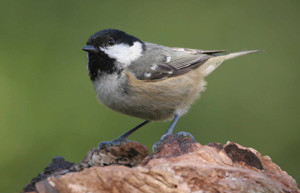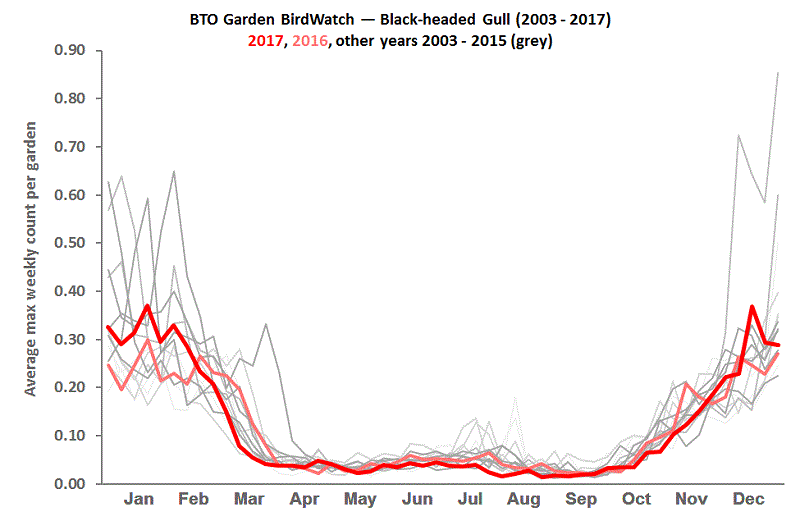GBW Annual Results 2017


Overall 2017 was warmer than average, with a mild winter followed by a rainy but warm summer. Numbers of winter thrushes, and indeed garden birds in general, were low at the start of 2017, with no severe weather events to drive them to bird feeders. Wintering Blackcaps appeared to leave early last year, with counts dropping away in February rather than March. The normal Siskin peak in March was fairly low at 13% of gardens, compared to 27% the year before.
Numbers of Blue Tits, Great Tits and Sparrowhawks were very low at the start of the year, following a rainy spring in 2016 that seemed to particularly affect these birds, but the breeding populations of all three species appeared to recover in 2017, with counts at normal levels from June onwards. Blackbird counts were unusually low in July and August, with birds appearing to leave their garden breeding territories earlier than normal, perhaps due to the heavy rain in June and July. Goldfinches were seen in very high numbers in the autumn, with counts dropping back to normal by November. The final months of 2017 saw colder weather, and more birds at our feeders.


No comments:
Post a Comment